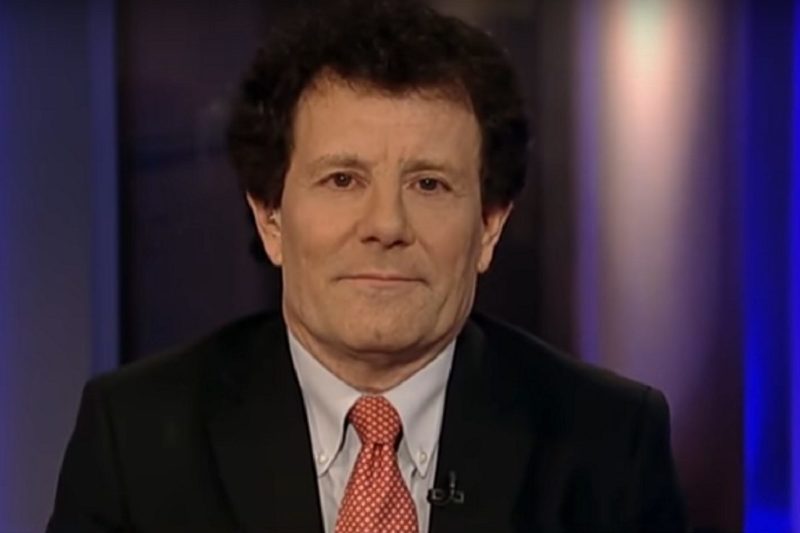When Allies Stigmatize: Nick Kristof, Family Planning, and Abortion
In a recent column, the Pulitzer Prize-winning journalist distinguishes abortion from other types of health care—a common false dichotomy but a peculiar stance from a global health advocate.

In a March 4 op-ed for the New York Times, columnist Nicholas Kristof attempted to champion family planning by throwing abortion under the bus. In doing so, he failed to recognize that abortion is a vital part of health care that millions of Americans need, just like Pap smears, contraception, prenatal care, and breast cancer screenings.
Instead of framing abortion as part of the spectrum of reproductive health care, Kristof went out of his way to distinguish it from the other services that clinics provide. Of the Maine clinics he visited, he wrote that the “vast majority of the care provided is pretty uncontroversial.” While he doesn’t say it directly, it’s clear that he’s implying that the one “controversial” service the clinics provide is abortion.
But Kristof is wrong. Abortion actually isn’t that controversial for the majority of people in the United States. Politicians may deliberately exploit abortion as a culture war mainstay, but the everyday public sees and experiences it quite differently. About seven in ten Americans support Roe v. Wade, the 1973 Supreme Court decision that legalized abortion in the United States. Most Americans react with support and sympathy when a loved one shares that they’ve had an abortion. And of course, every year, almost one million U.S. women have abortions. It’s a common procedure that most members of the public support and want available in their communities. Abortion isn’t controversial. Politicians who are restricting abortion and risking the health of their constituents are controversial.
Kristof doesn’t just stigmatize abortion care by deliberately distinguishing it from the other services that clinics provide; he also reinforces the acceptability of the discriminatory Hyde Amendment. Hyde withholds insurance coverage of abortion for people on Medicaid, Medicare, Tricare (the health system for military personnel, military retirees, and their dependents), and any other federally funded insurance program. He writes, “This isn’t about the government paying for abortions. That’s already mostly banned. This is about paying for birth control and cancer screenings when the provider has some connection, even a remote one, to abortions.”
Kristof is correct to point out that abortion stigma jeopardizes other necessary health services; for example, a clinic that doesn’t provide abortions but is part of a chain that does in other facilities can lose funding for breast cancer screenings if politicians take aim at abortion.
But notice that Kristof doesn’t condemn the Hyde Amendment, which, according to a new report from the National Network of Abortion Funds, contributes to making abortion incredibly cumbersome to access, especially for women of color, young women, and women in the South and Midwest. In fact, Kristof seems to be suggesting that it’s OK for the government to decide what health care is and isn’t appropriate for insurance to cover, with “birth control and cancer screenings” being acceptable forms of care. He seems to suggest that it’s fine to exclude abortion from coverage.
This is a peculiar stance for an influential global health advocate like Kristof to take, especially since evidence overwhelmingly shows that abortion is a life-saving procedure and that the cost of an abortion can place this legal (uncontroversial!) medical procedure out of reach.
Kristof tries to make nice with mythical levelheaded anti-choice opponents by reminding them that “the truth is that these clinics do more to reduce abortion rates than any army of anti-abortion demonstrators.” This isn’t a new frame for Kristof, who wrote in 2012 that the correct policy approach to abortion was Bill Clinton’s formulation that it should be “safe, legal, and rare.” This focus on reducing abortions instead of expanding access to abortion again unnecessarily stigmatizes the procedure. He should explain that the focus needs to be on making sure every person who needs an abortion has access to a nearby clinic where they can get affordable, compassionate care.
Pivoting to “reducing the abortion rate” presupposes that abortion is a negative health outcome to be avoided and that there are already “too many” abortions in the United States.
Both of these ideas couldn’t be further from the truth. Rigorous public health data tells us that abortion is actually a positive health outcome, often assisting women in regaining power and well-being in their lives. And while one million abortions in the United States annually may sound like a lot, due to the more than 288 abortion restrictions passed by legislatures since 2010, there are likely many women who would like to access an abortion who just were not able to surmount those barriers. Even if clinics provide services that lead to fewer abortions, that doesn’t make safe abortion care any less needed.
Marginalizing abortion from the rest of reproductive health care ignores the reality that millions of people across the country need access to abortion services, and that abortion services are a crucial part of family planning services. Kristof owes it to his readers to untangle the political and funding structures that artificially separate abortion and family planning instead of reinforcing this too-common but false dichotomy between them.
